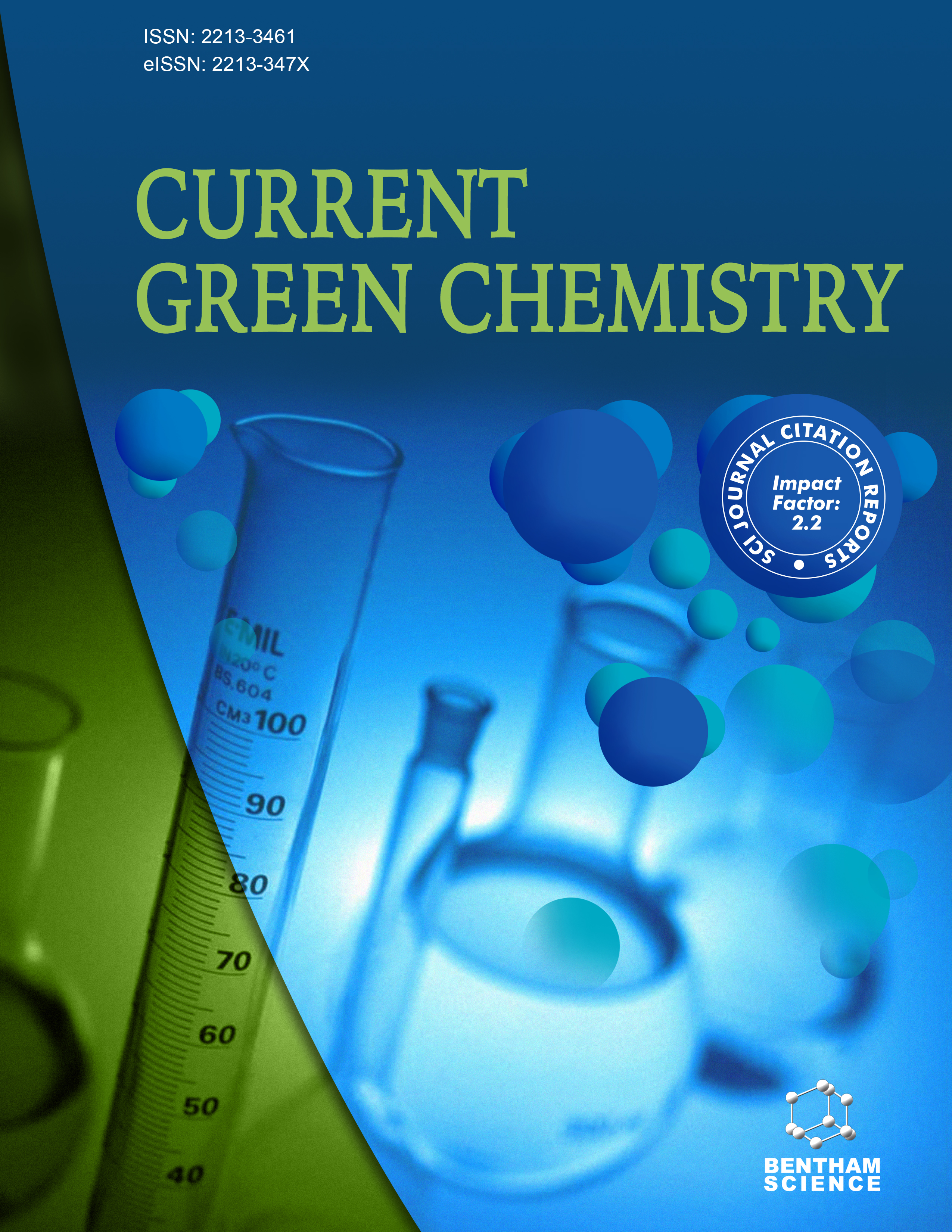- Home
- A-Z Publications
- Current Green Chemistry
- Previous Issues
- Volume 6, Issue 1, 2019
Current Green Chemistry - Volume 6, Issue 1, 2019
Volume 6, Issue 1, 2019
-
-
Alum (KAl(SO4)2.12H2O) - An Eco-friendly and Versatile Acid-catalyst in Organic Transformations: A Recent Update
More LessPotassium alum (KAl(SO4)2.12H2O), commonly known as ‘alum’, has recently drawn the attention of synthetic chemists as an efficient, safe and eco-friendly acid catalyst in implementing a large number of organic transformations, thereby generating interesting molecular frameworks. The present review article offers an overview of the potent catalytic applications of this commercially available and low-cost inorganic sulfat Read More
-
-
-
Valorization of Carbon Dioxide into Oxazolidinones by Reaction with Aziridines
More LessAuthors: Katie J. Lamb, Ian D.V. Ingram, Michael North and Mani SengodenThe reduction of carbon dioxide has gained much attention due to increasing environmental concerns about global warming associated with carbon emissions from industrial effluents and public transport etc. In this regard, considerable attention has been devoted to the chemical conversion of carbon dioxide, and its incorporation into synthetic organic molecules under mild and “green” conditions. In recent years, significant effo Read More
-
-
-
Efficient Catalytic Upgrade of Fructose to Alkyl Levulinates with Phenylpyridine-phosphotungstate Solid Hybrids
More LessAuthors: Chengjiang Fang, Yan Li, Zhaozhuo Yu, Hu Li and Song YangBiomass, as the most abundant and renewable organic carbon source, can be upgraded into various value-added platform molecules. To implement more sustainable and economic catalytic biomass valorization, reusable heterogeneous catalysts would be one of the preferable choices. In this work, a series of phosphotungstic acid-based solid hybrids were produced by assembly of phosphotungstic acid with diffe Read More
-
-
-
Adsorptive-removal of Bromothymol Blue as Acidic-dye Probe from Water Solution Using Latvian Sphagnum Peat Moss: Thermodynamic Assessment, Kinetic and Isotherm Modeling
More LessAuthors: Said H. Lubbad, Balsam Kamal Abu Al-Roos and Fawzi Suliman KodehA green and environmental–friendly method for the removal of the hazardous bromothymol blue from aqueous solution was considered applying a hydrophilic, biocompatible and biodegradable natural sorbent of Latvian sphagnum peat moss, applying shaking-dispersive solid-phase extraction. First, the influence of shaking speed was evaluated at 300, 600, 900 U. Furthermore, the optimum conditions of dye-adsorption, such as Read More
-
-
-
Catalyst-Free Glycerol Promoted Green Synthesis of 2-amino-1,8-naphthyridine-3-carbonitriles and 2-amino-3-quinolinecarbonitriles
More LessAuthors: Km N. Shivhare, Anushree Srivastava and Ibadur Rahman SiddiquiWe describe herein the use of glycerol as an efficient and sustainable approach for the synthesis of 2-amino-1, 8-naphthyridine-3-carbonitriles and 2-amino-3-quinolinecarbonitriles. The catalyst- free reactions occur straightforwardly using biodegradable and non-hazardous solvent. It is a strategy to address mounting environmental concerns with current approach includes the use of environmentally benign solvent, simple Read More
-
-
-
Polyaniline Supported Palladium Catalyzed Reductive Degradation of Dyes Under Mild Condition
More LessAuthors: Moumita Roy, Asish Mondal, Arijit Mondal, Amit Das and Debkumar MukherjeePolyaniline supported palladium catalyst was applied in the reductive degradation of organic dyes such as Methylene Blue, Rhodamine B, and Methyl Orange in presence of sodium borohydride as an environmental-friendly approach. Role of pH, catalyst amount, and catalyst support were investigated thoroughly to achieve complete and efficient degradation within few minutes under ambient condition. Heterogeneous natu Read More
-
Most Read This Month
Article
content/journals/cgc
Journal
10
5
false
en


